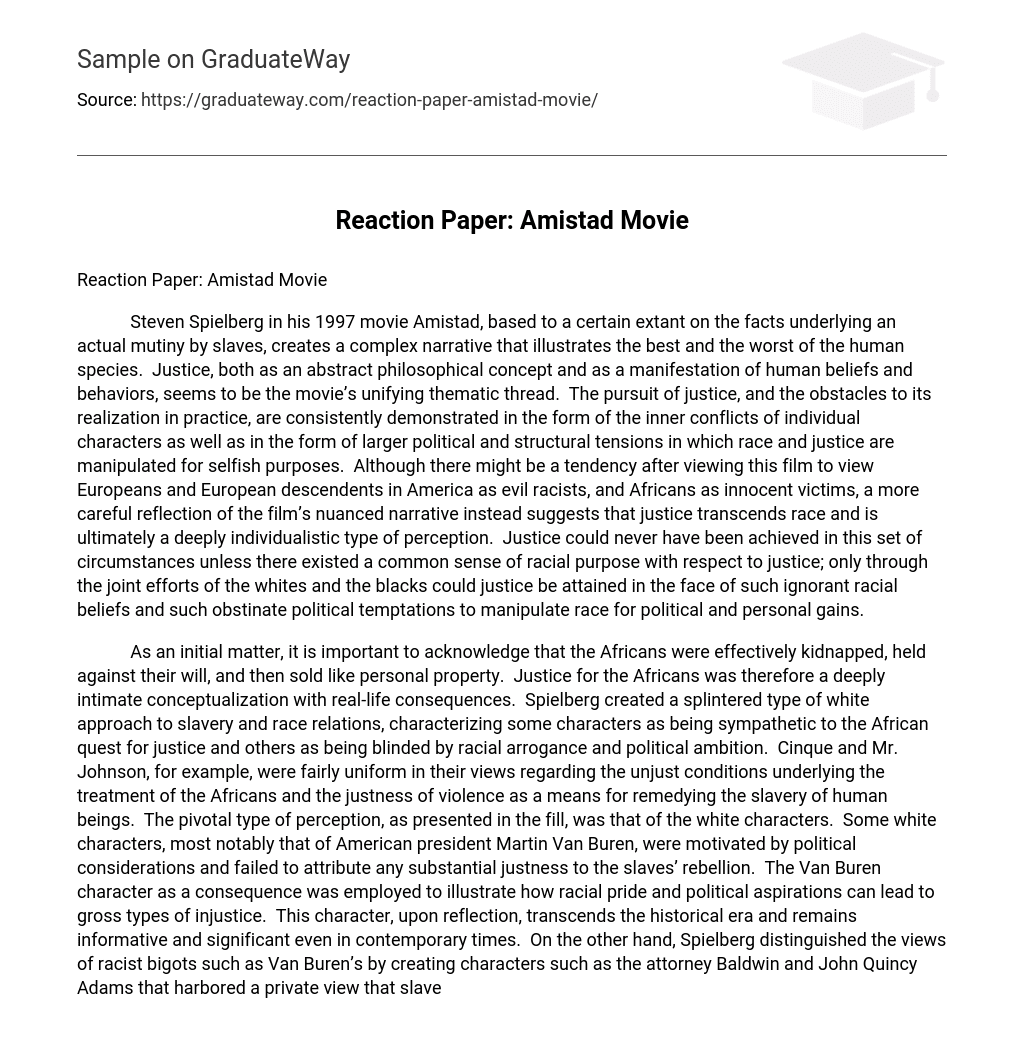Steven Spielberg in his 1997 movie Amistad, based to a certain extant on the facts underlying an actual mutiny by slaves, creates a complex narrative that illustrates the best and the worst of the human species. Justice, both as an abstract philosophical concept and as a manifestation of human beliefs and behaviors, seems to be the movie’s unifying thematic thread. The pursuit of justice, and the obstacles to its realization in practice, are consistently demonstrated in the form of the inner conflicts of individual characters as well as in the form of larger political and structural tensions in which race and justice are manipulated for selfish purposes. Although there might be a tendency after viewing this film to view Europeans and European descendents in America as evil racists, and Africans as innocent victims, a more careful reflection of the film’s nuanced narrative instead suggests that justice transcends race and is ultimately a deeply individualistic type of perception. Justice could never have been achieved in this set of circumstances unless there existed a common sense of racial purpose with respect to justice; only through the joint efforts of the whites and the blacks could justice be attained in the face of such ignorant racial beliefs and such obstinate political temptations to manipulate race for political and personal gains.
As an initial matter, it is important to acknowledge that the Africans were effectively kidnapped, held against their will, and then sold like personal property. Justice for the Africans was therefore a deeply intimate conceptualization with real-life consequences. Spielberg created a splintered type of white approach to slavery and race relations, characterizing some characters as being sympathetic to the African quest for justice and others as being blinded by racial arrogance and political ambition. Cinque and Mr. Johnson, for example, were fairly uniform in their views regarding the unjust conditions underlying the treatment of the Africans and the justness of violence as a means for remedying the slavery of human beings. The pivotal type of perception, as presented in the fill, was that of the white characters. Some white characters, most notably that of American president Martin Van Buren, were motivated by political considerations and failed to attribute any substantial justness to the slaves’ rebellion. The Van Buren character as a consequence was employed to illustrate how racial pride and political aspirations can lead to gross types of injustice. This character, upon reflection, transcends the historical era and remains informative and significant even in contemporary times. On the other hand, Spielberg distinguished the views of racist bigots such as Van Buren’s by creating characters such as the attorney Baldwin and John Quincy Adams that harbored a private view that slavery was unjust, that the rebellion was justified, and that the ideals underlying the American ideal demanded a more humanitarian and a more egalitarian treatment of all human beings. Justice resides in the mind rather than in the color of one’s skin and it can only be achieved when these private beliefs are publicly expressed and put into action. These are the main lessons the movie seems to offer and them seem entirely reasonable guidelines for individual and social behavior.
References
Amistad (1997 Movie). Steven Spielberg.





